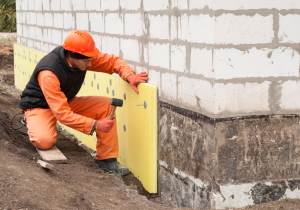How to Spot Early Signs of Foundation Problems

Your home is more than just a place to live; it’s an investment and a sanctuary for you and your family. Ensuring its longevity and structural integrity is paramount, which is why detecting early signs of foundation problems is crucial. Ignoring or overlooking these signs can lead to severe damage, costly repairs, and even safety hazards. In this comprehensive guide, we’ll discuss how homeowners can identify early warning signs, understand the importance of timely detection, and take preventive measures to maintain a healthy foundation.
 Foundation Problems
Foundation Problems
Foundation problems refer to any issues that compromise the stability and integrity of a building’s base structure. Common types of foundation issues include:
- Settlement: When the soil beneath the foundation compresses, leading to uneven sinking.
- Heaving: The opposite of settlement, where the soil expands and pushes the foundation upward.
- Cracks: These can be vertical, horizontal, or diagonal, and may signal different types of stress or movement.
- Water Damage: Excess moisture around the foundation can weaken it over time.
- Foundation Slabs: Shifts or cracks in the concrete slab foundation.
Understanding these issues helps in identifying potential problems early on and taking the necessary steps to mitigate them.
Early Warning Signs
Spotting foundation problems early can save homeowners significant time and money. Here are some of the most common warning signs to look out for:
Visual Signs:
- Cracks in Walls or Floors: Look for cracks in drywall, brickwork, or basement floors.
- Gaps Around Windows and Doors: Misaligned frames and gaps can indicate foundation movement.
- Sloping Floors: Uneven or sloped floors are a telltale sign of foundation issues.
- Warped Ceilings: Sagging or distorted ceilings can be a result of foundation shifts.
Structural Signs:
- Doors and Windows That Stick: Difficulty in opening or closing doors and windows can be due to foundation movement.
- Separation of Walls from the House: Exterior walls pulling away from the structure.
- Chimney Cracks: Cracks in the chimney can indicate foundation issues since it’s a heavy part of the house.
Environmental Signs:
- Poor Drainage: Water pooling around the foundation can lead to issues.
- Soil Shifting: Changes in the soil, such as erosion or expansion, can affect the foundation.
- Vegetation Growth: Large trees or plants near the foundation can cause damage through their root systems.
Importance of Timely Detection
Timely detection and repair of foundation issues are essential for several reasons:
- Cost-Effective: Early detection often results in less expensive repairs.
- Prevent Further Damage: Addressing minor issues can prevent major structural damage.
- Safety: Foundation problems can compromise the safety of your home, leading to potential hazards.
- Property Value: Maintaining a solid foundation ensures the value of your property remains intact.
Ignoring these signs can lead to extensive damage, making repairs more complicated and costly.
Spotting Signs Inside and Outside the House
Identifying foundation problems requires vigilance both inside and outside your home.
Inside the House:
- Inspect walls, ceilings, and floors for cracks or bulges.
- Check for gaps around doors and windows.
- Test doors and windows for ease of opening and closing.
- Look for signs of water damage or dampness in the basement.
Outside the House:
- Examine the exterior walls for cracks or separation.
- Check the foundation for visible cracks or shifts.
- Observe the chimney for any cracks or leaning.
- Ensure proper drainage away from the foundation.
Regular inspections can help catch issues early before they become serious problems.
 Preventive Measures
Preventive Measures
Maintaining your home’s foundation involves proactive steps to prevent issues from arising:
- Proper Drainage: Ensure gutters and downspouts direct water away from the foundation.
- Soil Grading: Maintain a slope away from the foundation to prevent water pooling.
- Waterproofing: Apply waterproof coatings to basement walls and floors.
- Tree Placement: Plant trees and large plants away from the foundation to avoid root damage.
- Regular Inspections: Conduct periodic checks of your home’s foundation and surrounding areas.
Taking these preventive measures can help maintain the integrity of your home’s foundation and avoid costly repairs.
When to Call a Professional
While some signs of foundation problems can be addressed with DIY methods, others require professional intervention:
- Large Cracks: Any cracks larger than 1/4 inch should be evaluated by a professional.
- Significant Shifts: Noticeable sinking or heaving of the foundation.
- Persistent Water Issues: Ongoing water damage despite preventive measures.
- Structural Concerns: Any signs that compromise the structural integrity of your home.
Consulting with a foundation specialist ensures accurate diagnosis and appropriate remediation, safeguarding your home’s stability.
Detecting early signs of foundation problems is crucial for every homeowner. From visual cracks to structural shifts, recognizing these indicators can save you from costly repairs and ensure the safety and longevity of your home. Regular inspections, preventive measures, and knowing when to call a professional are essential steps in maintaining a solid foundation.
